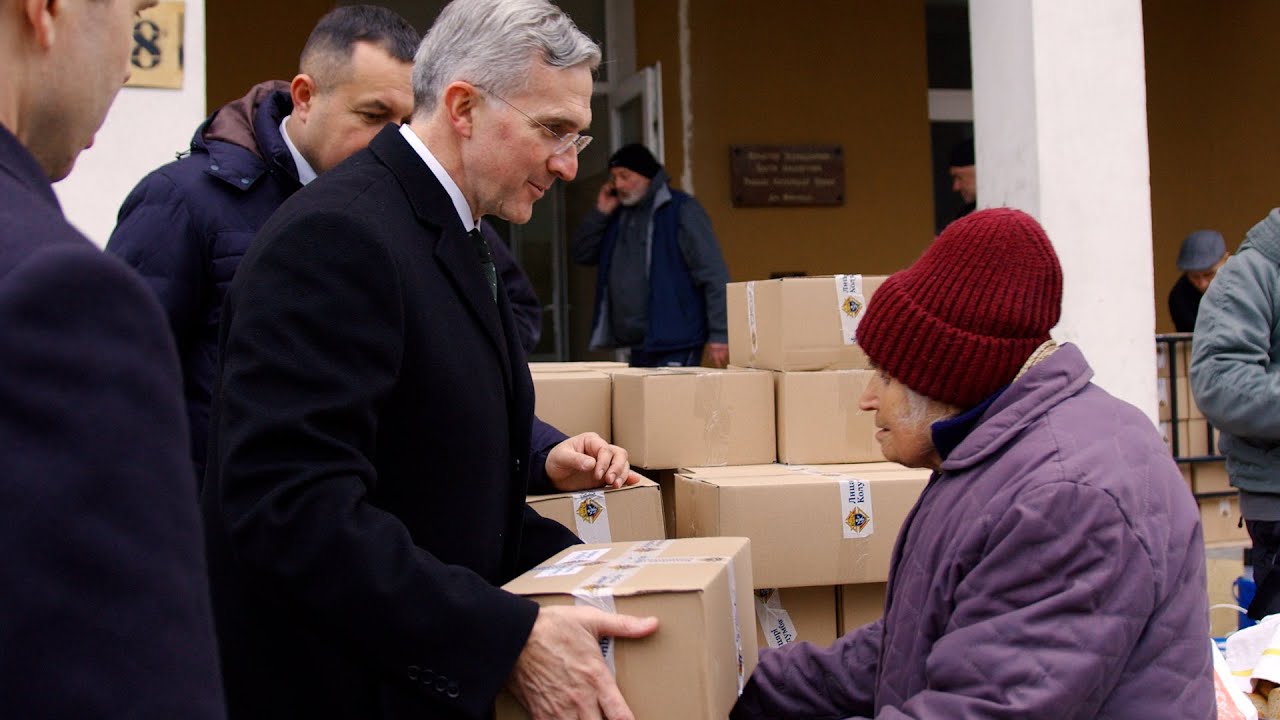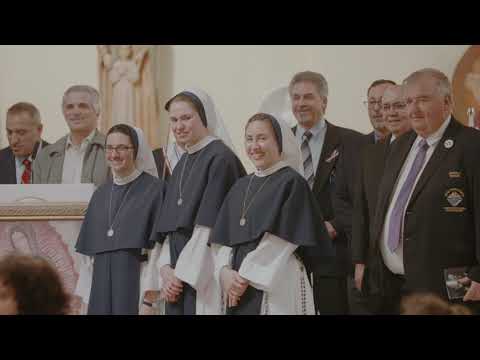
Every time Maria del Rosario Gomez gets to have a 15-minute call with her son, Jose Ruben Hernandez Gomez, she asks him, « My precious son, what did you eat today? »
Even though it’s challenging, she tries to send him $150 a month so that he can eat something better than what he is served at the Mesa Verde Immigrations and Customs Enforcement (ICE) Processing Center, and share some of that food with others.
But the weekend before Lent started, Jose Ruben told her, « As the word of God says, ‘One does not live by bread alone,’ » quoting Matthew 4:4, where Jesus tells the devil in the desert, « One does not live by bread alone, but by every word that comes forth from the mouth of God. »
On Feb. 17, 82 people began a hunger strike at two central California immigration detention centers, protesting the facilities’ conditions and demanding their closure. Since then, numbers of hunger strikers have fluctuated as new people have joined and others have stopped due to health concerns.
The hunger strike at the Mesa Verde ICE Processing Center in Bakersfield and the Golden State Annex in McFarland follows a 10-month-long ongoing labor strike demanding that detained workers who undertake tasks such as cleaning dormitories and dining halls be paid California minimum wage instead of $1 a day.
In December, the California Division of Occupational Safety and Health fined the GEO Group, the private prison company that operates Mesa Verde and the Golden State Annex, $104,510 for six violations of state codes at the Golden State Annex.
Minju Cho, a staff attorney for the American Civil Liberties Union of Northern California, told NCR that in response to the labor strike, « ICE and GEO reacted with an intensity that belies the idea that [the voluntary work program] is actually voluntary. If it were truly voluntary, then folks could choose to stop participating in it at any time without consequence. » The ACLU is part of a coalition that is supporting advocacy efforts led by detained people.
Throughout the labor strike, participants have alleged they have faced retaliation, including being placed in solitary confinement and receiving what they describe as « sexually abusive pat-downs. »
On Feb. 23, five hunger strikers filed a class action lawsuit against Immigration and Customs Enforcement and GEO Group. In the lawsuit, the hunger strikers say that since they began their strike they have been denied access to worship services, family visitation and the detention center yard, and have been threatened with solitary confinement, or kept in dorm rooms that were painfully cold.
Through the hunger strike, participants are asking they be paid California minimum wage for the work they have completed, for safer working conditions, that they have free and accessible ways to communicate with loved ones, that the « sexually abusive » pat-downs end, and for GEO to comply with ICE’s detention standards, including those regarding receiving new clothing and footwear, prompt medical attention, and fresh and high quality food.
Asked for comment about the strike and the lawsuit, an ICE spokesperson told NCR the agency does not comment on ongoing or pending litigation.
In 2022, Mercy Sr. Joan Marie O’Donnell from Burlingame*, California, took part in an interfaith pilgrimage to every immigration detention center in California. She told NCR it was powerful to hear the stories of witnesses who came back to speak outside the facilities where they were detained.
At the Mesa Verde and Golden State Annex detention centers, O’Donnell said, « What they’re describing is expired food at meal times. They’re required to pay astronomical prices for items that they buy in their commissary. They receive inadequate medical care. They lack visitation opportunities with their loved ones. »
O’Donnell said she continues to be motivated to pray and advocate for immigrants in her retirement because of Isaiah 61’s promise of freedom for prisoners and the call in the constitution of the Sisters of Mercy to collaborate in acts of mercy.
Gomez, Jose Ruben’s mother, is worried about the possibility of his deportation to Mexico. Jose Ruben came to the U.S. when he was 3 years old.
With Jose Ruben in detention, Gomez says he is not the only one who suffers. « I suffer so much that you cannot imagine it, » she said. Jose Ruben used to take her to Mass. Now, she prays constantly that God will take care of him.
When asked about the spiritual life of detained Catholics in the two detention facilities, Chandler Marquez, spokesperson for the Diocese of Fresno, told NCR that the diocese has not been allowed to provide chaplaincy services in the two facilities since the beginning of the pandemic. The diocese had not known about the hunger strike and is not involved in the strikers’ advocacy.
A deacon who is a chaplain for both detention facilities remains in contact with the facilities, and he has not been told he is allowed to return to serving Catholics detained in them, said Marquez.
When NCR asked why chaplaincy was restricted and when the Diocese of Fresno would be able to provide chaplain support again, a spokesperson for GEO group wrote, « We strongly reject these allegations. »
« Both the Mesa Verde ICE Processing Center and Golden State Annex have dedicated facility chaplains on staff who administer religious programming and facilitate interactions with outside/volunteer ministry personnel who are allowed to visit in compliance with the CDC’s COVID-related visitation guidelines, » said the spokesperson.
The GEO group spokesperson also said that their facilities provide access to legal services, recreational amenities, and « around-the-clock access to medical care » and that three meals a day are based on nutritional menus that are approved by a registered dietitian.
Regarding the allegation of retaliation, the GEO group spokesperson pointed to their grievance process and zero tolerance policy for staff misconduct. « Any alleged misconduct by GEO staff is promptly investigated and addressed, » they said.
Gomez said she is praying for Jose Ruben as he continues his hunger strike. « I know my son has a good heart and that he doesn’t do it just for himself, but for others, so that the situations in those detention centers change, » she said.
*Correction: The original version of this article misidentified Mercy Sr. Joan Marie O’Donnell’s hometown. We apologize for the error.











